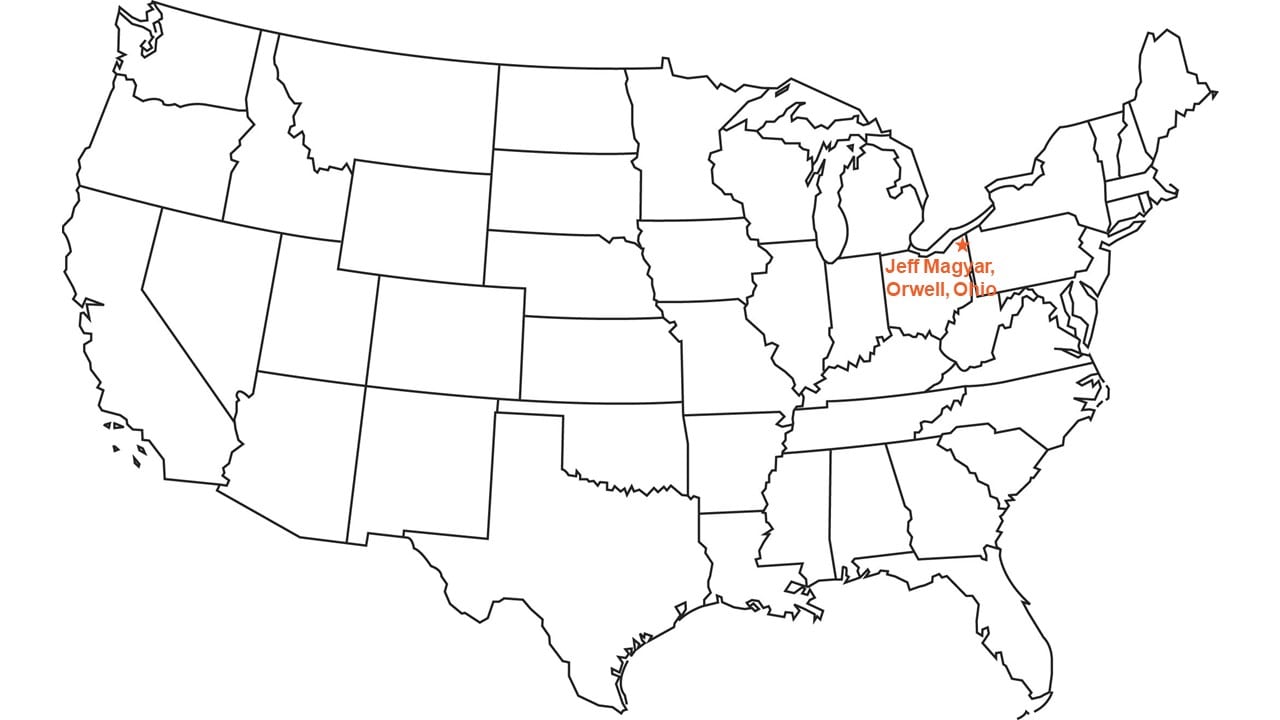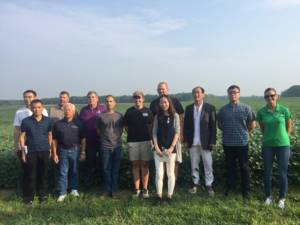 As one of the U.S. farmers committed to producing high-quality food-grade soybeans, I have had regular opportunities to get to know our customers. My family contracts our 600 hectares, or 1,500 acres, of food-grade soybeans through Schwartz Farms, a family-owned food-grade soybean exporter based in Cortland, Ohio, about 25 km, or 15 miles, from our farm. They have been involved in this market since 1996, and we have been working with them for the past decade. We are among the 72 farmers that grow soybeans for Schwartz Farms in Ohio, Pennsylvania and New York State.
As one of the U.S. farmers committed to producing high-quality food-grade soybeans, I have had regular opportunities to get to know our customers. My family contracts our 600 hectares, or 1,500 acres, of food-grade soybeans through Schwartz Farms, a family-owned food-grade soybean exporter based in Cortland, Ohio, about 25 km, or 15 miles, from our farm. They have been involved in this market since 1996, and we have been working with them for the past decade. We are among the 72 farmers that grow soybeans for Schwartz Farms in Ohio, Pennsylvania and New York State.
Schwartz Farms works closely with their customers, who produce tofu, soymilk and miso. Almost every year – with the obvious exception of last year – Schwartz Farms and one of their primary customers in Japan bring customers to the area to see our crops. They also participate in customer visits coordinated by the U.S. Soybean Export Council (USSEC). I always make an effort to meet with them while they are in our area. I am always inspired by their commitment to quality and their desire for a premium product.
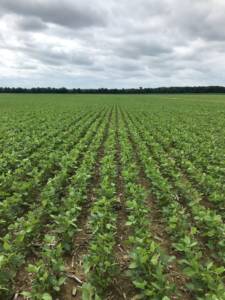 I also visited Japan several years ago, participating in a conference, as well as touring tofu plants, food packaging production and other links in the soyfood supply chain. During this visit to Japan, I saw first-hand the importance of a reliable food supply, as every available bit of ground was committed to food production, rather than the landscaping we do in the U.S.
I also visited Japan several years ago, participating in a conference, as well as touring tofu plants, food packaging production and other links in the soyfood supply chain. During this visit to Japan, I saw first-hand the importance of a reliable food supply, as every available bit of ground was committed to food production, rather than the landscaping we do in the U.S.
Getting to know these customers helps us better meet their needs. For example, I understand why our customers require clean, snow-white soybeans with a clear hilum and no seed coat damage for tofu production. We usually raise soybeans for tofu, and knowledge gained through these relationships reinforces our production practices.
Weed Control Protects Soy Quality
Take weed control, the current focus for this year’s crop. We can very easily clean weed seed from soybeans at harvest. But weeds themselves hold moisture in their stems and leaves. Any uncontrolled weeds at harvest that go through our combine will come into contact with some soybeans, transferring some of that moisture to the dry soybeans. Once on the soybeans, that moisture would attract dust that stains our white soybeans.
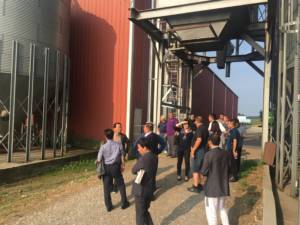 To prevent that problem and protect soybean quality, we work hard to manage weeds. We rotate most of our fields between food-grade soybeans and corn crops. While raising corn in a field, we take advantage of herbicide technology to control weeds throughout the season. That minimizes the weed population for the following year. Before planting soybeans, we rely on minimum-tillage to disturb the soil and control any winter or early season weeds while still leaving corn residue on the surface. That ensures we plant soybeans into a weed-free field.
To prevent that problem and protect soybean quality, we work hard to manage weeds. We rotate most of our fields between food-grade soybeans and corn crops. While raising corn in a field, we take advantage of herbicide technology to control weeds throughout the season. That minimizes the weed population for the following year. Before planting soybeans, we rely on minimum-tillage to disturb the soil and control any winter or early season weeds while still leaving corn residue on the surface. That ensures we plant soybeans into a weed-free field.
Then we rely on a premium residual herbicide to prevent weeds from emerging with the crop. We scout our soybeans a couple of times each week until they canopy to see if any weeds are showing up. If any weeds do appear, we immediately apply herbicide to control them.
We are currently scouting our 2021 crop for weeds. So far, the soybeans look good to excellent. Planting went smoothly for us, though it was interrupted by rain, so we have early and later-planted fields. We only replanted a few spots. We are experiencing very good growing conditions – the right amount of rain, without being too wet.
Monitoring Container Logistics
These customer relationships also encourage me to pay attention to the challenges of delivering our soybeans to them. For example, the shipping container logistics that have impacted countless global industries as a result of the COVID-19 pandemic are impacting the ability for Scwartz Farms to deliver the soybeans we are producing.
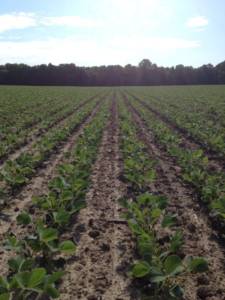 Typically, shipping containers are readily available in our region, as automobile industry parts are delivered to manufactures in the Cleveland and Columbus, Ohio, area. However, the web of supply chain and container availability challenges have limited the availability of those parts and the ability to get containers sent to the inland U.S. Our shipping logistics remain in place to fill and ship containers of food-grade soybeans. The containers simply aren’t available.
Typically, shipping containers are readily available in our region, as automobile industry parts are delivered to manufactures in the Cleveland and Columbus, Ohio, area. However, the web of supply chain and container availability challenges have limited the availability of those parts and the ability to get containers sent to the inland U.S. Our shipping logistics remain in place to fill and ship containers of food-grade soybeans. The containers simply aren’t available.
Because I understand the importance of getting my soybeans to customers, I have been doing my part to raise awareness of this challenge. I am encouraging a variety of industries and stakeholders to work together to do what we can to provide solutions to the current container logistics issues.
My partnership with Schwartz Farms is just one example of the ways U.S. soybean farmers provide high-quality food-grade soybeans that meet customer needs. We want to build relationships with end users.
I look forward to sharing more about the progress of our food-grade soybean crop, how we protect quality and how we ensure sustainability later this season.
